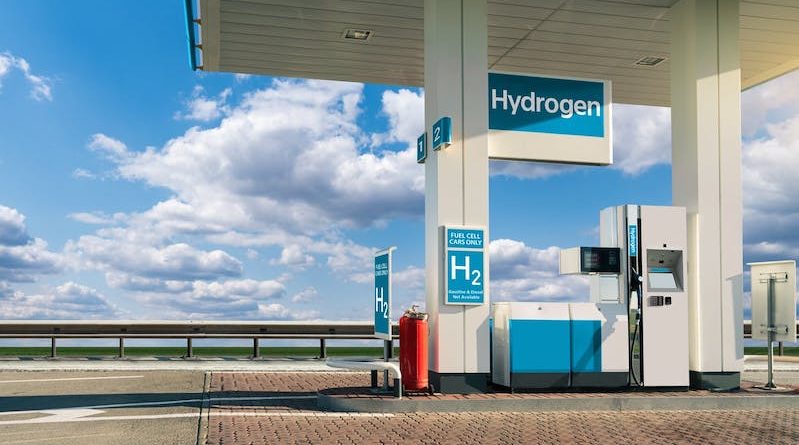
The role of the Alternative Fuels Infrastructure Regulation
After the Commission has presented its regulation on the development of a Europe-wide infrastructure for alternative fuels, I highly welcome the political decision to replace the originally foreseen directive with a regulation as time is pressing. We had already suggested such an upgrade, i.e. from a directive to a regulation, in our EP-Resolution “Deployment of infrastructure for alternative fuels in the European Union: time to act!” in 2018 with me as the S&D Rapporteur.
If the transport sector as a whole, which is responsible for more than a quarter of all CO2 emissions in the EU, should be entirely free of emissions by 2050, road transport in particular must make a decisive contribution to reach this goal.
A Europe-wide infrastructure, especially charging stations and hydrogen filling stations, is the best way to finally break through the “chicken and egg” discussion, which has been going on for years. As already noted: time is running out and we need to act now!
We have lost so many valuable years. In 2013, an ambitious proposal was already on the table. Had it been adopted as proposed by the Commission at the time, there would be more than 677.000 charging stations on Europe’s streets today, spread across all EU Member States.
The proposal back then set binding targets for all Member States – and yet, it was watered down, particularly by the Council of Ministers, to an extent that only non-binding national action plans remained. It is obvious that these non-binding plans have not produced the desired results. Today, there are roughly 220,000 charging stations installed in the EU, and over 70% of the latter are concentrated in three countries: France, Germany and the Netherlands.
The Commission’s new proposal provides binding targets for all Member States. These targets no longer relate to individual charging points, but to the actual capacity installed.
In the future, for every registered Battery Electric Vehicle, a Member State must provide an electric power output of at least 1 kW in the charging system, as well as 0.66 kW for every Plug-in Hybrid vehicle. In addition, a “charging pool” needs to be created at least every 60 km on Europe’s TEN-T core network from 2025, with the minimum capacity gradually increasing. From 2030, this should also apply to the entire comprehensive TEN-T network.
For Heavy Duty Vehicles the situation will be slightly different: there will only be a distance-based target for the TEN-T core and comprehensive network. Here, we have to make sure that the charging power output must be sufficient to ensure that vehicles can be charged up during rest times, and that charging stations are placed adjacent to rest facilities during the drivers’ night time rest.
The Commission have also included minimum shore-side electricity (SSE) supply for seagoing ships in seaports and for inland waterway vessels in their proposal. Furthermore, obligations are introduced for electricity supply to all stationary aircraft in TEN-T core and comprehensive network airports. In concrete terms, this means that there would be an obligation for Member States to provide electricity supply for airplanes and ships.
Specifically on hydrogen: According to the Commission proposal, it is still too early for the full deployment of hydrogen infrastructure for road transport, but for 2030 Member States will have to ensure that there are publicly accessible hydrogen refuelling stations along the TEN-T core and its comprehensive networks. Major truck manufacturers, however, suggest that fuel cell trucks will not be ready for series production until the second half of this decade, and hence I think it is worth having a discussion around the binding targets for 2030.
An important topic for me personally is the harmonisation of payments, which will be key to ensure that the electrification of road transport can be achieved in an accessible and democratic way. All users should have a possibility to recharge their vehicles at any charging point.
The Commission is also aiming for a more user-friendly charging infrastructure, confirming that such ad-hoc payments should be possible. Better price transparency and easier payment options, including the ability to pay by card without authentication shall be implemented at all charging stations.
I think what we need to strengthen here is the obligation to ensure that it will be possible to use card payments at all charging points, and we should not merely rely on the latest technological paying methods such as applications or QR codes. Those technical solutions are fine, sure, but card payment must always be a possible option for payment. So let us press for it!
Overall, the Commission’s proposal makes a solid impression incorporating many elements of what the European Parliament in particular has been calling for years. Given that this regulation will decide on the deployment of the alternative fuels infrastructure in our Union, it will be important to ensure that the provisions we set for this infrastructure also correspond to the targets, which are set in other files in the Fit-for-55 package. Notably, this means that we will have to work in close cooperation with the Commission and the Council.




